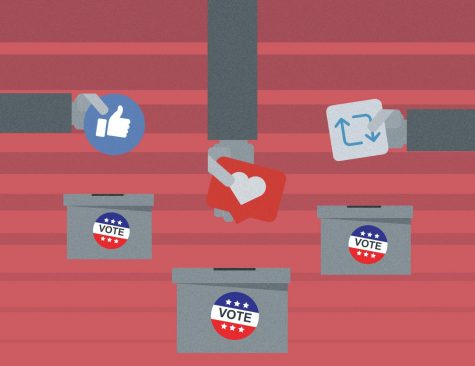Pandemic Will Have a Lasting Impact on Children and Teens
Social distancing measures will have a long-term impact on child and adolescent mental health (Courtesy of Twitter).
October 21, 2020
Before the pandemic, we took socialization for granted. The ease of being able to text a friend and go hang out, to go to concerts or sporting events, or to connect with people all around us were given. But in the age of the pandemic, our ability to communicate with others has been severely compromised. The consequences of this isolation from others will not just disappear overnight; it will have long-term ramifications for the social development of children and teenagers throughout the world.
Social development is a crucial part of growing up. Without a strong base to build one’s identity and understanding of those around them, children and teenagers will lag in developing their understanding of more complex social issues. In elementary school, we learn the core moral building blocks of empathy, collaboration and compromise. We learn how to deal with failure and victory through the games we play on the playground. Our friendships become more complex in middle school and allow us to confront new emotions such as jealousy and insecurity. These building blocks help build the foundation for the way we function socially as adults.
Nowhere will the consequences of the pandemic be more apparent than in the teenagers who have been affected by this quarantine and lack of social interaction. Adolescence is already a sensitive period for social development without the addition of a pandemic. Their time is spent more with peers than with their family members, leading to an increased reliance on social approval from others. This period in their life is marked by using social interaction as a sole means to determine their well-being, far more than any other age demographic. In terms of social development, teenagers begin to figure out their identity and how that fits into their relationships with other people, often in terms of intimacy and loyalty. This period also marks a higher vulnerability to mental health problems, with 75% of adults who experience a mental health condition reporting symptoms before the age of 24. With rising rates of anxiety and depression among teenagers, it is clear that reduced social contact can harm their social development during this period.
The slim data about the effects the pandemic is having on children’s mental health is already a sign of worry. One study in China, published in JAMA Pediatrics and referenced in Time Magazine, looked at the place where the coronavirus originated: the Hubei province of China. They examined a group of 2,330 schoolchildren, focusing on signs of mental distress. At the time of the study, the schoolchildren had only been in lockdown for 33 days, a number that seems incredibly short in comparison to the months of lockdown and social distancing America has been put through. After just one month of monitoring social distress symptoms, the numbers were troubling: 22.6% of schoolchildren reported depressive symptoms, while 18.9% reported anxiety symptoms. If these were the effects after just one month, what could that spell for children that have been in quarantine for far longer?
There is some hope for mitigation of the effects that the pandemic could have on mental health. There is an ever-growing number of video calling services to meet the new demand for face-to-face interaction with loved ones at risk. Social media apps allow teenagers to engage in each other’s lives, even if they cannot be present. This may challenge the stereotypical idea of what socialization is and can mitigate the effects of social isolation. In a poll conducted among 13 to 17-year-olds, 71% said social media made them feel more connected to their friends, and 68% said it allowed them to access social support during hard times. However, social media cannot be a cure-all; if anything, it is a double-edged sword.
Social media often adds to the issues that hinder social development and mental health in the first place. Heavy social media usage has long been correlated with mental health disorders like anxiety and depression. As humans, we often feel a need to compare ourselves to others to assess our own opinions and abilities. This behavior, while prevalent among all ages, is far more common in teenagers. Even passive use of social media can lead to social comparison to a false, shiny and unattainable world. In a period of identity development, social media is an outlet that creates a public standard to which everyone can measure themselves. Creating more social media usage through social distancing and government-mandated quarantine only adds to this reliance.
It is easy to assume that once the vaccine for coronavirus is widely available, the world will return to the way it was before quarantine, but there will still be damage we will have to grapple with for years to come. Social development and mental health in today’s teenagers will be some of the long-term effects of the virus, but that doesn’t mean they won’t rise to the challenge and overcome it. Dr. Erika Hernandez at Penn State talked about the idea of social setbacks for children and teenagers, saying, “Development is a lifelong process. There’s not a skill or domain in which children can’t get better or work at.” There may be detrimental, long-term consequences to the social development of teenagers and other children throughout the world, but humans are resilient. We can bounce back from hardship, even if it might not be instantaneous. Whatever long-term effects this pandemic may present to social development and mental health, we will persevere, develop and grow.
Samantha Scott, FCRH ’24, is an international political economy major from Columbus, Ohio.












If you want a picture to show with your comment, go get a gravatar.